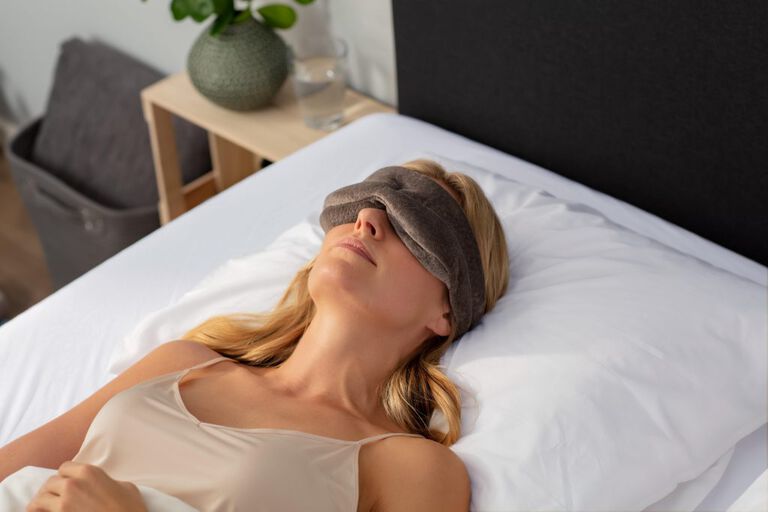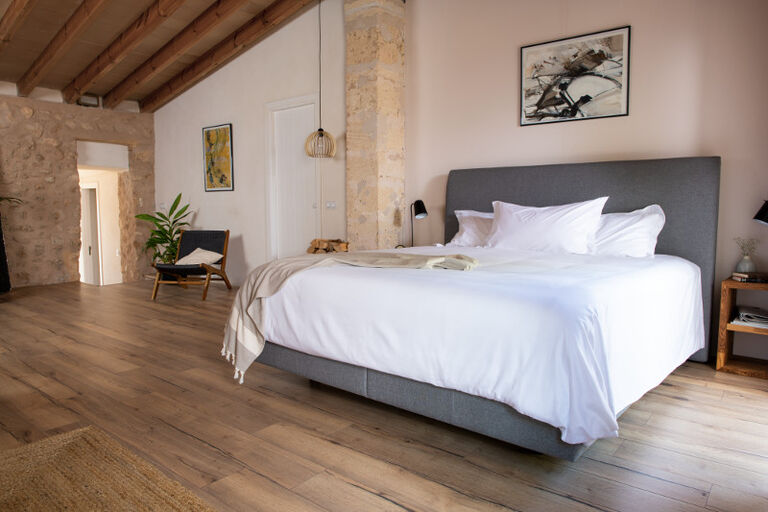HOW TO SLEEP ON A PLANE?

According to a study conducted by Skyscanner Australia, 79% of Australians said they struggled to sleep on a plane (1). So, what can you do to improve your chances of getting to sleep on a plane? In this post, we’re going to uncover long haul flight tips so you can find out how to sleep on a plane. From putting in the preparation beforehand, to following the right sleep ritual on-board, these are the steps to follow if you want to arrive feeling refreshed and ready for anything.
THE PREPARATION
While some people seem to be able to fall asleep anywhere, for most, there is some preparation that goes into getting the best possible sleep on a plane. There are several things you can do to prepare yourself for sleep before you even set off on your journey, and it all starts with finding the right seat on the plane.
Your seat will have a huge impact on your quality of sleep on a plane. Seats close to the galley or the toilets tend to be louder, with more people coming and going throughout the flight. Bulkhead seats may seem like a good option as they offer more legroom, but these are generally where families are placed, so can be noisy if there are babies and toddlers on the flight.
Choosing a window seat may be your best option. Not only can you avoid having other passengers climbing over you to get out to the aisle, you can use the wall to lean your head against to find a more comfortable sleep position. Bear in mind that the seats at the back of each section of the plane may not recline fully, so you should avoid these if possible.
ARRIVE FEELING RESTED
Aside from choosing the right seat, dressing appropriately can also be important. Try to dress comfortably, wearing loose clothing and layers that can be added to or removed according to the temperature. Thick socks and loose fitting shoes can avoid reduced circulation, especially as feet tend to swell in the plane’s pressurised environment.
Staying hydrated is essential when flying. If you want to get the best rest, you may want to avoid caffeine up to six hours before the flight, avoid alcohol altogether, and stay topped up with water. Avoiding spicy and fatty foods can also help to improve sleep quality, as can keeping to your existing eating schedule to prevent your body’s internal rhythm from getting confused.
THE RIGHT TOOLS
When you sleep at home, there are four key environmental factors that affect your quality of sleep: comfort, light, noise and temperature. If you want to sleep better on a plane, your control over these factors can be improved with the right tools.
- Comfort: While seats in economy are notoriously uncomfortable, there are ways you can make them slightly more comfortable, even if you aren’t able to fully recline. Many people swear by a travel pillow, as sleeping on a plane pillow isn’t always that great. While you may roll up your plane pillow to offer extra lumbar support, your travel pillow can be placed under your chin and over your shoulders to offer support for your head and neck. Aside from the neck pillow, another popular travel accessory is the inflatable footrest. Before investing in one of these, check your airline allows them.
- Light: At home, your bedroom is dark. In a plane, light can come from all directions. From individual spot lamps and overhead fluorescents to open window shades and television screens, you can block all these out with a good eye mask. Read more about finding the right eye mask for better sleep here .

- Noise: Your bedroom is also quiet, which a plane most definitely is not. Whether it’s cabin crew serving drinks, other passengers talking, coughing or snoring, or simply the noise of the engines, this can all make sleep difficult to come by. Investing in earplugs or noise-cancelling earphones can help block out noise, as can a white noise playlist.
- Temperature: While you generally get better sleep when it’s cool, long haul flights can be very cold indeed. Bring warm clothes and socks, and make use of the plane blankets to wrap up warm enough to sleep comfortably.
While controlling these external factors can improve your quality of sleep on a plane, there are other tools you may use to help calm your mind in readiness for sleep. You could download a meditation app prior to take-off, you may try natural supplements such as magnesium and melatonin, or you could opt for relaxing scents such as lavender in a spritz or balm.
THE RITUAL
Many people have a ritual for bedtime, and while it may not be possible to follow the same ritual in a plane, it can still be helpful to utilise a ritual to encourage sleep when travelling. This can involve finding the right position in your seat, using your travel pillow correctly, leaning back, and keeping your legs uncrossed.
It can be a good idea to wait until the meal service is over before trying to get to sleep. On overnight flights, airlines will usually darken the plane, encouraging passengers to quieten down. Get prepared during the meal service, so you can take advantage of the darkened, quieter conditions later.
That means using the toilet, stretching, drinking water and getting comfortable. Staying away from screens and other distractions can be helpful, and if you don’t want to be disturbed, fasten your seatbelt over your blanket. With some airlines, you may tell the cabin crew you want to sleep through the meal service and don’t want to be woken.
- https://www.skyscanner.com.au/news/how-to-sleep-on-a-plane-best-positions-seats-sleeping-tips
Feel it for yourself
Find a Tempur store or Stockist and try out our range of mattresses for yourself




